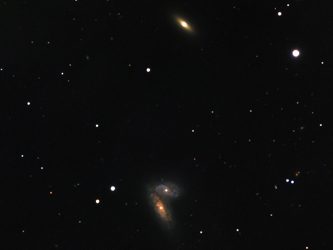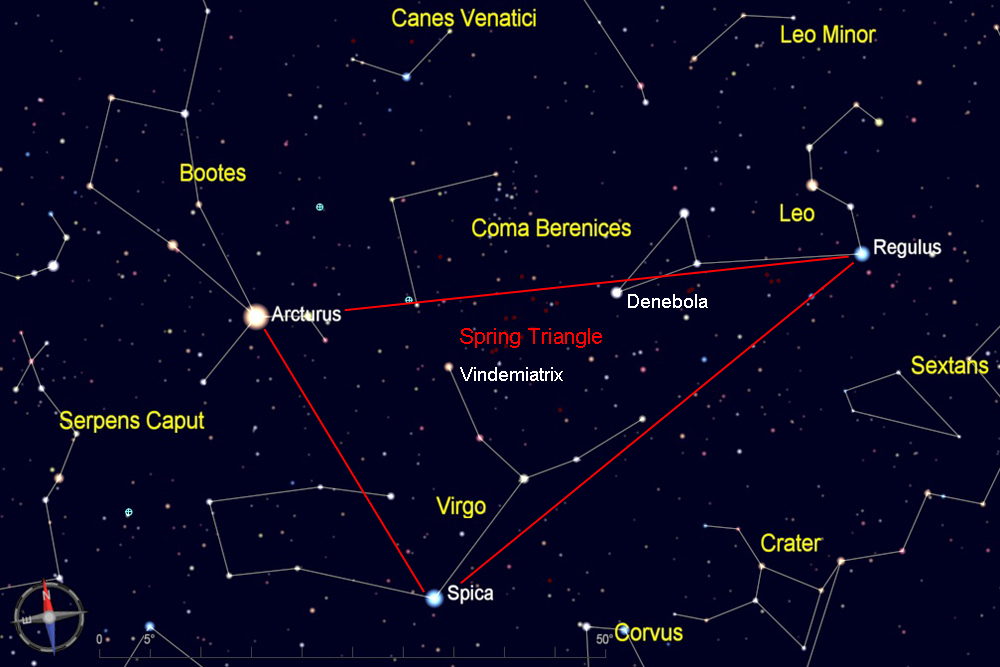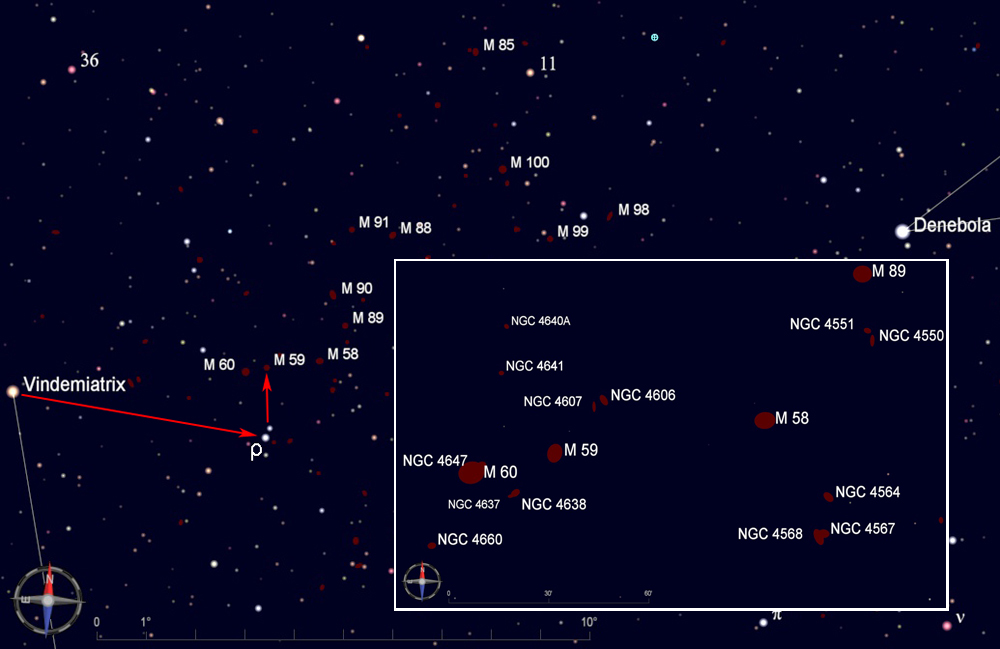With a medium or large telescope, hundreds of galaxies can be glimpsed in the Virgo galaxy cluster, and some can be found in pairs. Just south of M58 is the interacting pair of 12th magnitude galaxies NGC 4567 and 4568, the Butterfly Galaxies. Another close pair, NGC 4550 and 4551, is northeast of M58. A third pair, NGC 4606 and 4607, is to the west of M58 and north of M59. The chart below can help find these and other nearby galaxies.
|
 |
| Evening visibility: |
March-July |
| Best viewed with: |
medium or large telescope |
| |
Printable chart (pdf) |
View larger image |
Directions:
Start by finding the Spring Triangle, which consists of three widely-separated first magnitude stars--Arcturus, Spica, and Regulus. The Spring Triangle is high in the southeast sky in early spring, and in the southwest sky by mid-Summer. (To get oriented, you can use the handle of the Big Dipper and "follow the arc to Arcturus").
For this star hop, look in the middle of the Spring Triangle for Denebola, the star representing the back end of Leo, the lion, and Vindemiatrix, a magnitude 2.8 star in Virgo. The galaxies of the Virgo cluster are found in the area between these two stars. |
. |
| From Vindemiatrix, look 5 degrees west and slightly south to find ρ (rho) Virginis, a magnitude 4.8 star that is easy to identify because it is paired with a slightly dimmer star just to its north. Center ρ in the telescope with a low-power eyepiece, and then just move 1.4 degrees north to arrive at the oval shape of M59. Continuing with a low-power eyepiece and using the inset in the chart below, you can take hops of less than 1 degree to M58 and then south to the NGC 4567 and 4568. |
 |
| Star charts created with Cartes du Ciel |
| |
| |


